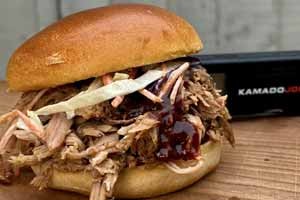Easy, tender BBQ pulled pork, loaded into buns with coleslaw and BBQ sauce.
A Beginner's Guide To Temperature-Based Cooking
Both the Thermapen Classic and Thermapen ONE are easy to use, highly accurate and reliable temperature instruments. However, it’s important to understand the relationship between food and temperature in order to get the correct results from your thermometer.
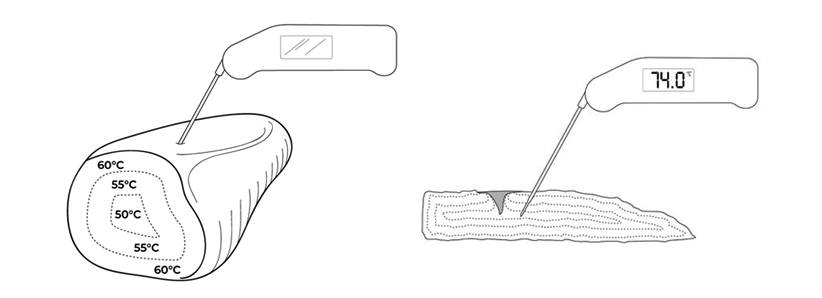
Why cook by temperature?
Cooking by time, sight or touch is an unreliable and inaccurate method of cooking that leaves room for uncertainty and error. Using temperature to determine if your food is done will.
• Produce perfectly cooked food every time
• Reduce the risk of food poisoning
• Prevent food from being overcooked and dry
• Save time
• Reduce waste
• Eliminate stress and guesswork
• Increase confidence and enthusiasm around cooking
How temperature affects food
When food is cooked, the outside cooks quicker than the inside, because the heat has less distance to travel. Similarly, when food is cooled, the outside cools quicker than the inside. Temperature always affects the outside of the food before the centre, and this means that although some of the food may be a safe temperature, some of it may not be. Learning how to correctly take a temperature means knowing that a food is entirely, not partially, safe to eat.
When is temperature critical to food?
The main temperature critical points that your Thermapen can be used for are thawing, cooking, cooling, storing and reheating. At all of these points there are temperature guidelines that foods must be within in order for them to be safe for consumption.
Thawing frozen food: Must be thawed thoroughly in the fridge until the core temperature is between -1 and 4°C.
Cooling cooked food: Must be quickly cooled from 55°C to 20°C throughout within two hours before refrigerating or freezing
Storing cooked food: Must be kept below 8°C or above 63°C and should not be left out for more than two hours.
Reheating cooked food: Must be reheated until 75°C throughout and kept at this temperature for 30 seconds.
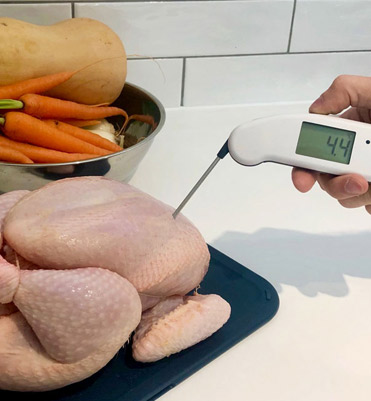
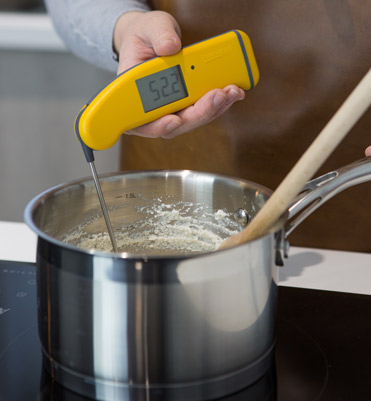
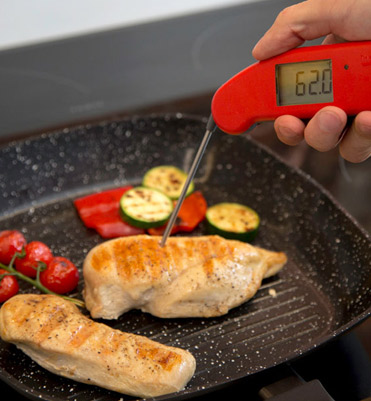
How to correctly insert a temperature probe?
Because the middle of the food takes the longest to cook, the temperature of solid food needs to be taken from the centre or thickest part. To take a reading, insert the probe and slowly move it towards the centre of the food. As you get closer towards the middle you will see the temperature begin to drop, and then rise again as you move past the core. Be sure to avoid any bones, fat or gristle. Remember, cooked food is only as safe as its lowest temperature, so spot checking is essential for larger foods. Insert the probe into several other places to ensure it has come to temperature throughout.
If taking the temperature of small or thin foods such as chicken wings, the Thermapen only needs to be inserted 3mm deep into the food to take an accurate measurement. This is because it has a professional-grade thermocouple probe which is not usually found in other digital instant-read thermometers.
When taking the temperature of liquid foods such as jam or syrup it’s important to ensure they have come to temperature throughout. Stir the liquid before inserting the probe to ensure the heat has circulated.
Temperature Guide
We have created a Thermapen temperature guide page for you to check out all the important cooking temperatures whenever you need to. But you can also get a nice fridge magnet to keep the temperatures in sight in the kitchen.
The temperatures can be used as a guide to cooking specific foods. For any foods that aren’t listed here or if in doubt, 75°C is a good general temperature to aim for in your cooking.
Related posts
 5 Best Cooking Christmas Gifts 2025
5 Best Cooking Christmas Gifts 2025
 How Long to Rest a Turkey
How Long to Rest a Turkey
 The Ultimate Turkey Cooking Guide
The Ultimate Turkey Cooking Guide
 How to Cook Beef Ribs with the Smokin' Elk
How to Cook Beef Ribs with the Smokin' Elk
 How to Use a Meat Thermometer Accurately
How to Use a Meat Thermometer Accurately
Search
Categories
- Baking (35)
- BBQ (85)
- Autumn (14)
- Cheap Eats (9)
- Sweet Treats (38)
- Tips, Advice & Info (78)
- Christmas (36)
- Drinks (2)
- Thermapen Father's Day Recipes (18)
- Team Temperature (28)
- Date Night (37)
- Celebrations (20)
- Family & Kids (10)
- Fish (21)
- Low & Slow (13)
- Meat (142) click
-
Chefs (132)
click
- Kenny Tutt (16)
- Richard Holden (16)
- Barbechoo (7)
- Only Slaggin (1)
- SoSaSe Chocolat (1)
- Genevieve Taylor (5)
- Becky Excell (2)
- Charlotte Stirling-Reed (3)
- The Smokin Elk (13)
- Marcus Bawdon (2)
- Thermapen Chef (25)
- Edd Kimber (2)
- Humble Plates (7)
- Simon May (4)
- The Hedgecombers (3)
- Billy & Jack (4)
- Perfectly Preserved (3)
- Mike Tomkins (20)
- DJ BBQ (2)
- Nick Nairn (4)
- BBQ Jake (1)
- Air Fryer (9)
- RFX (6)
Latest recipes
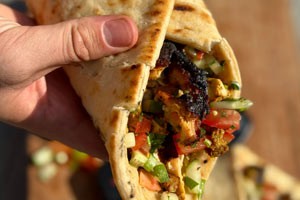
Rotisserie-cooked chicken shawarma, coated in a punchy yoghurt marinade. Pile into flatbreads with salad
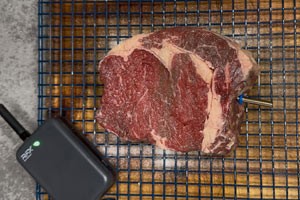
Ribeye is an amazing, flavour-packed cut of beef. Learn how to cook ribeye steak medium rare using the reverse sear...
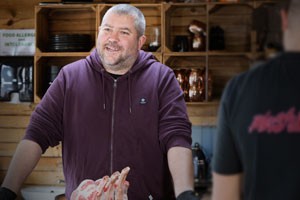
Elky Whittaker, aka The Smokin’ Elk, began barbecuing as a hobby 10 years ago. Today, he has 262k Instagram followers...
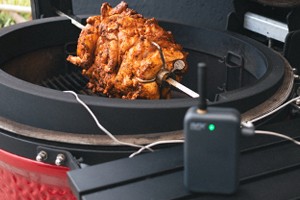
Juicy BBQ chicken shawarma recipe with homemade flatbreads and garlic sauce.
Archive
Popular Recipes
